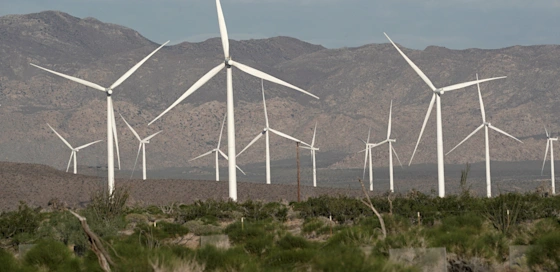Power generated by wind turbines in the United States hit a milestone last week, becoming the second-highest source of electricity in the country for a 24-hour period, according to the Energy Information Administration.
Wind turbines generated more than 2,000 gigawatt-hours of electricity in the U.S. on Tuesday, March 29, more than was provided by nuclear and coal power plants that day. Wind power, which is renewable and does not release greenhouse gases into the atmosphere, still trailed the electricity produced by natural gas, but it was the first time in U.S. history that wind turbines outperformed nuclear and coal power.
On its website, the EIA notes, “The amount of wind electricity generation has grown significantly in the past 30 years. Advances in wind energy technology have decreased the cost of producing electricity from wind. Government requirements and financial incentives for renewable energy in the United States and in other countries have contributed to growth in wind power.”
In total, electricity generated from wind power has gone from roughly 6 billion kilowatt-hours in 2000 to 380 billion in 2021, EIA says. Wind turbines now account for roughly 9.2% of the U.S.’s total “utility-scale electricity generation,” according to the agency.
The rush toward wind energy has picked up steam as the country looks for ways to ween itself from oil and reduce greenhouse gas emissions that cause climate change. In 2020, 42% of new electricity generation capacity came from land-based wind energy, according to figures from the U.S. Department of Energy. Spurred on by federal tax incentives, wind turbines have been going up in states such as Illinois, Indiana, Iowa, Colorado, Kansas, Texas and Minnesota.
The U.S. Geological Survey has mapped the location wind turbines nationwide as an analytical tool for “government agencies, scientists, private companies, and citizens.”
In an effort to help the U.S. reach net-zero greenhouse gas emissions by 2035, President Biden announced leases in January for nearly 500,000 acres off the coast of New York and New Jersey for the construction of offshore wind farms.
In February, the Department of the Interior auctioned offshore leases off the coast of New York totaling $4.37 billion.
“This week’s offshore wind sale makes one thing clear: The enthusiasm for the clean energy economy is undeniable and it’s here to stay,” Interior Secretary Deb Haaland said in a written statement at the time. “The investments we are seeing today will play an important role in delivering on the Biden-Harris administration’s commitment to tackle the climate crisis and create thousands of good-paying, union jobs across the nation.”
In a report issued this week, the United Nations Intergovernmental Panel on Climate Change warned that in order to keep global temperatures from rising more than 1.5°C above pre-industrial levels, global greenhouse gas emissions have to start dropping in 2025 and go down 43% from current levels by 2030 — and 84% by 2050. To do so, experts say, wind power will need to ramp up significantly in the coming years.




